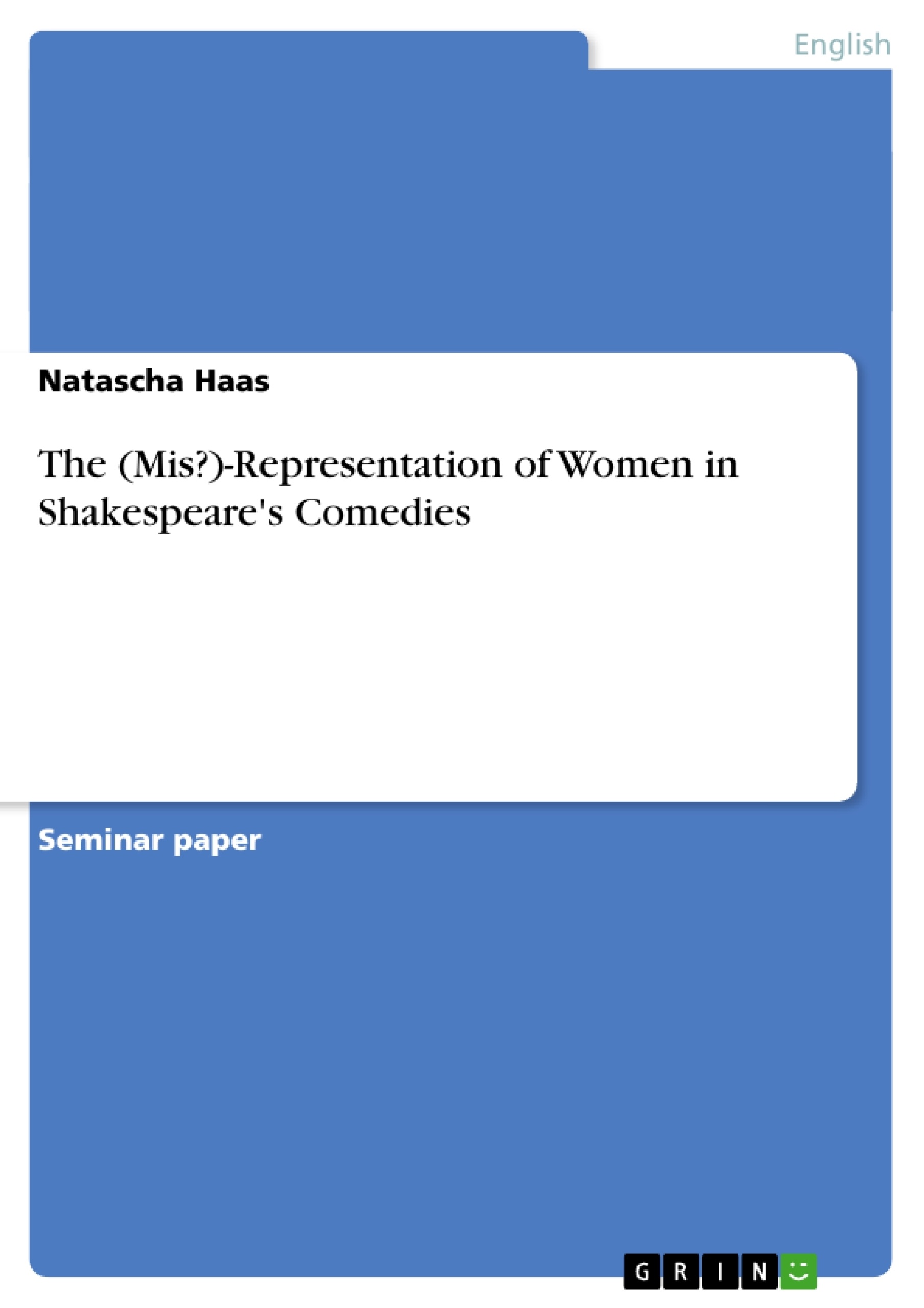Excerpt
Contents
A Introduction
B Main Part
1. Women and Society in Shakespeare’s times
2. Three theses
3. Discussion of the plays
3.1. The Comedy of Errors
3.2. Twelfth Night
3.3. Measure for Measure
C Summary
D Bibliography
A Introduction
Compared to other writers of his time, Shakespeare introduced an extraordinary amount of deep female characters in his plays. Because Shakespeare lived in a time when men played the major part in society and the role of women was basically limited to the household, one could easily come to the opinion that he was a reformer whose views were ahead of the Elizabethan times[1].
But is this really true? Does Shakespeare criticize the society he lives in by creating these characters, or do they just serve their purpose to make the plays more dramatic?
In this paper, I will first give an overview of the role of women in the Elizabethan age and society. After that I will analyse the female characters of three plays we discussed in the course in order to find out if Shakespeare’s views on women diverged from the general view of his time.
B Main Part
1. Women and society in Shakespeare’s time
In the Elizabethan age, women had a lower status than men. This view was founded on the tenets of bible, especially on quotations from the Apostle Paul’s letters:
1 Corinthians 11:3 But I want you to know that the head of every man is Christ, the head of woman is man, and the head of Christ is God. … 8 For man is not from woman, but woman from man. 9 Nor was man created for the woman, but woman for the man.
1 Corinthians 14:34 Let your women keep silent in the churches, for they are not permitted to speak; but they are to be submissive, as the law also says. 35 And if they want to learn something, let them ask their own husbands at home; for it is shameful for women to speak in church.
1 Timothy 2:11 Let a woman learn in silence with all submission. 12 And I do not permit a woman to teach or to have authority over a man, but to be in silence. 13 For Adam was formed first, then Eve. 14 And Adam was not deceived, but the woman being deceived, fell into transgression. 15 Nevertheless she will be saved in childbearing if they continue in faith, love, and holiness, with self-control.
Titus 2:3 the older women likewise, that they be reverent in behaviour, not slanderers, not given to much wine, teachers of good things -- 4 that they admonish the young women to love their husbands, to love their children, 5 to be discreet, chaste, homemakers, good, obedient to their own husbands, that the word of God may not be blasphemed.[2]
The most powerful women figures in the bible were Eve and Mary. But during Renaissance, women “dwelt more in the shadow of the fallen Eve than the risen Mary. […] Every woman was to be daughter of Eve, whose primal sorrow would overwhelm even the virgin full of grace.”[3] Nevertheless, according to 1 Timothy 2, 15, a woman can reach salvation if she marries, has children and leads a quiet life. “Most Renaissance women became mothers. Motherhood would define their lives and occupy most of their years.”[4]
Women were also inferior to men in their social status: As stated in 1 Corinthians 11, 3, the man is the head of the woman, which means that the father makes the decisions for his unmarried daughters, and once they marry, the husband is their master. Women had hardly any chance to lead an independent life, as by marriage, they depended on their husbands economically, socially and sexually.[5] In 1 Corinthians 14, 34-35, it is also said that women should not speak in public, but stick to the house and remain quiet. So women were also limited in their freedom of movement, as they should spend most of their time at home.
Also, femininity was seen as an imperfect minor stage of existence which would still have to be improved to become like masculinity, the perfect shining example.[6]
Nevertheless, changes were happening during Elizabeth’s reign. There were some movements which proclaimed the rights of women to speak and act for themselves[7], with the outstanding example of Elizabeth herself, although she still had a special status and “referred to herself as ‘prince’, with the body of a woman and the heart of a king.”[8]
This shows that, although the female role model was still very traditional, the tendency towards more freedom for women already existed in its very beginnings. I will discuss later on if this has been an inspiration for Shakespeare when he created his characters.
[...]
[1] The reign of Elizabeth I. only lasted till 1603, but although Shakespeare still wrote after that time, his views on women did not change: “…although Shakespeare wrote plays for some ten years into James’s reign, his vision of the women characters remains essentially Elizabethan.” (Pitt, Angela: Shakespeare’s Women. London/Totowa, 1981, p.32.)
[2] The Bible, New King James Version (1982), in: BibleWorks 6.0, CD-ROM Software for Biblical Exegesis and Research. © 2004 Bible Works, L.L.C.
[3] King, Margaret L.: Women of the Renaissance. Chicago/London, 1991, p.2.
[4] King, p.2.
[5] Schabert, Ina (ed.): Shakespeare-Handbuch. Die Zeit - Der Mensch – Das Werk – Die Nachwelt. Stuttgart,42000, p.26.
[6] cf. Schabert, p.319.
[7] cf. Schabert, p.319.
[8] King, p.158.
- Quote paper
- Natascha Haas (Author), 2004, The (Mis?)-Representation of Women in Shakespeare's Comedies, Munich, GRIN Verlag, https://www.grin.com/document/27218
Publish now - it's free






















Comments